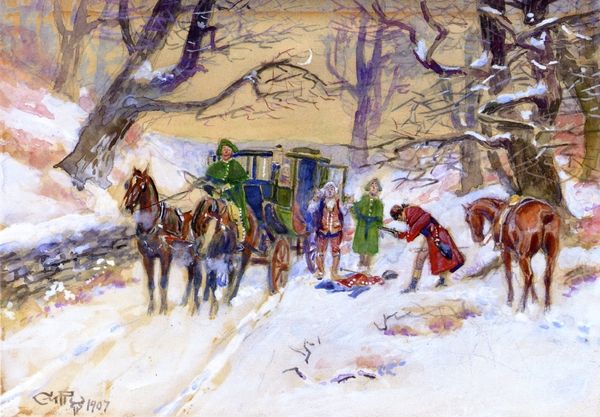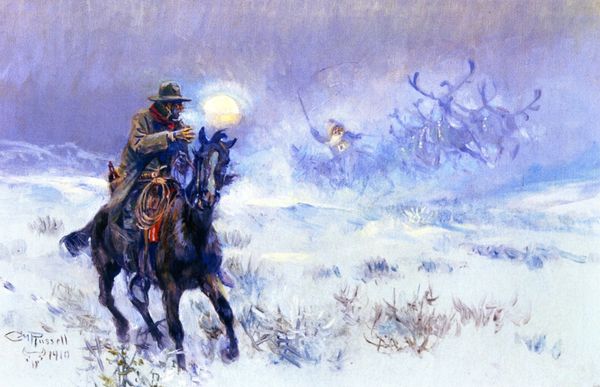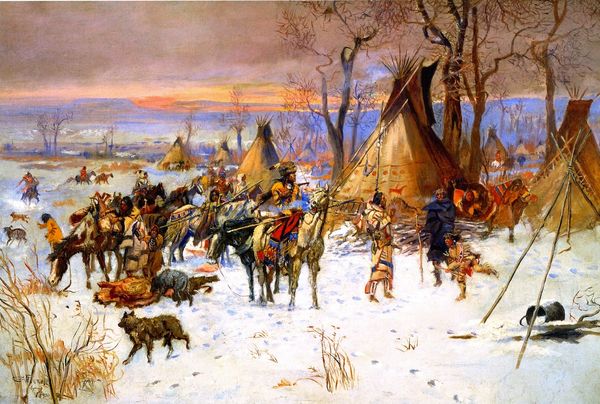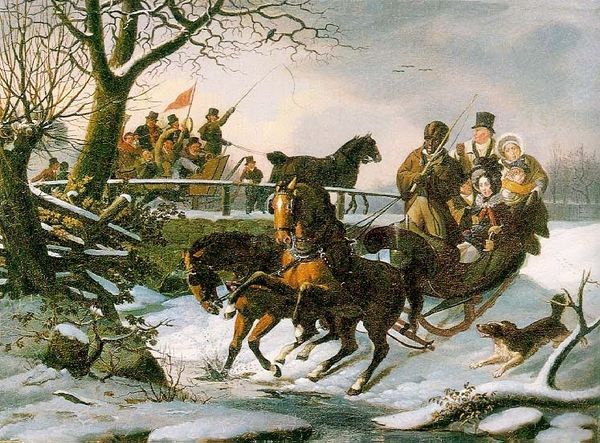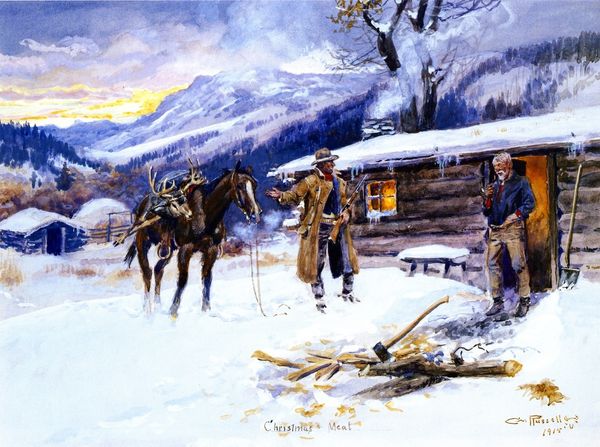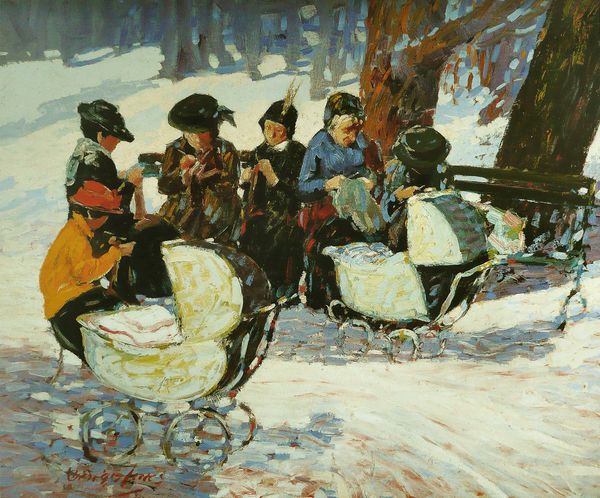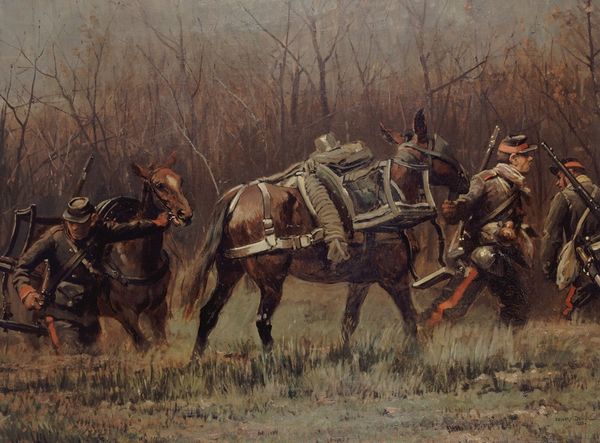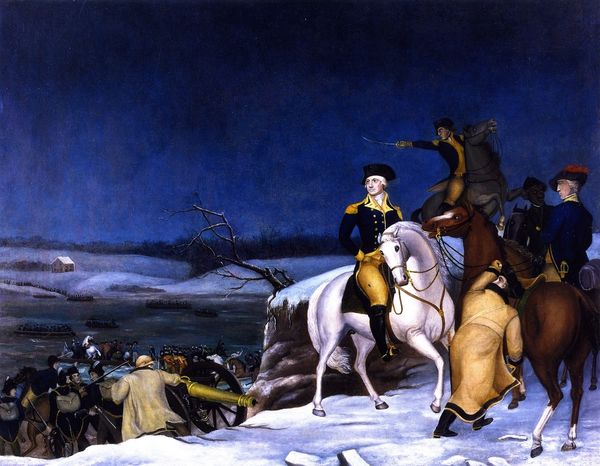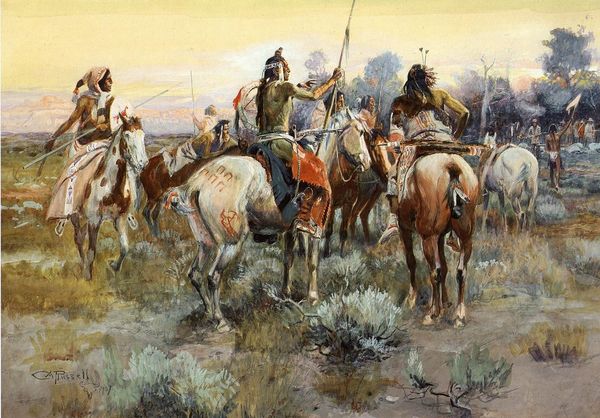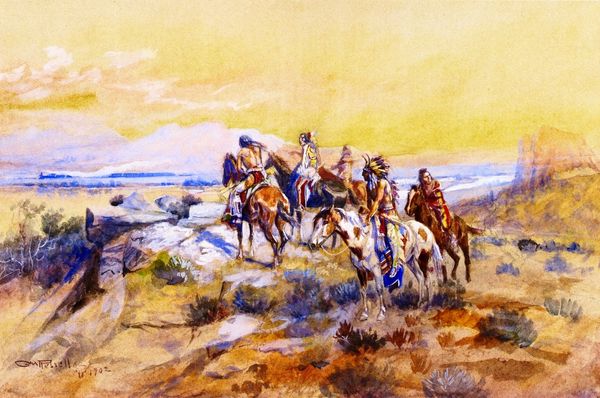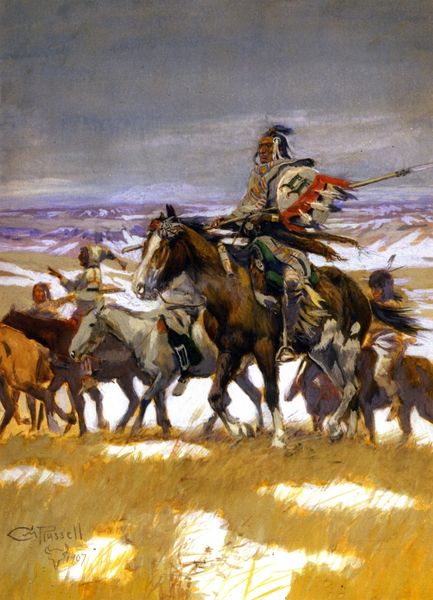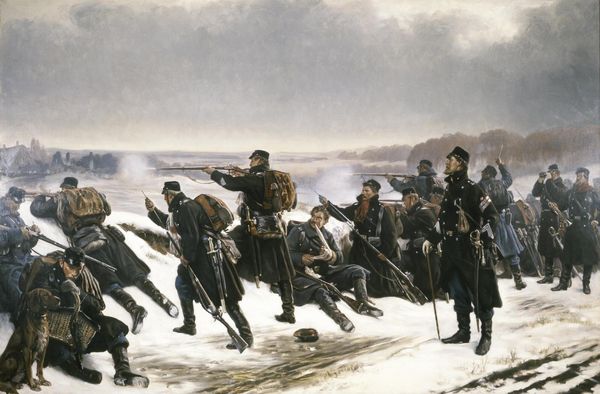
painting, oil-paint
#
portrait
#
narrative-art
#
painting
#
oil-paint
#
landscape
#
figuration
#
oil painting
#
genre-painting
#
history-painting
#
academic-art
#
realism
Copyright: Public domain
Curator: Charles M. Russell painted "Fleecing the Priest" in 1915. The scene depicts a clergyman being robbed in a snowy Western landscape. Editor: Immediately, I’m struck by the starkness of the landscape—that deep snow against the golden light. There's something really theatrical about it, heightened by the cleric’s melodramatic pose. Curator: Russell's work often grapples with the romanticized but harsh realities of the American West. This piece seems to engage with themes of power, faith, and the clash between different cultures and values on the frontier. Editor: I notice the materials; he’s working with oil paint, which gives a real weight and richness to the scene. It's interesting to see the textures of the snow rendered so realistically. Look at the way the brushstrokes capture the fall of light on it! Curator: Exactly! And notice how Russell positions the figures within this historical context. The clergyman represents established order, while the robbers evoke the perceived lawlessness and the social disruption happening across the West during that era. There's definitely an ideological struggle being visualized here. Editor: I am curious, how does Russell's style in painting these scenes contribute to constructing narratives about the West? Curator: Russell uses realism but also romanticizes his subjects. He appeals to the mythic idea of the frontier even while presenting scenes of social conflict and questioning traditional authorities. It is definitely complicated! Editor: Considering the inscription added to the painting— “If coin is the root of all evil…," we need to remember labor. It feels significant given what this cleric might symbolize, and in contrast to the material concerns of the other characters in the image. Curator: Thinking through those tensions really provides a lens through which to view societal expectations and the economic conditions that impact individual lives. Editor: It makes you think about how different the perception and use of value could be, even back then. Thanks for fleshing this out for me. Curator: Thanks! It's essential to consider both material realities and the stories they weave in the fabric of our cultural consciousness.
Comments
No comments
Be the first to comment and join the conversation on the ultimate creative platform.
